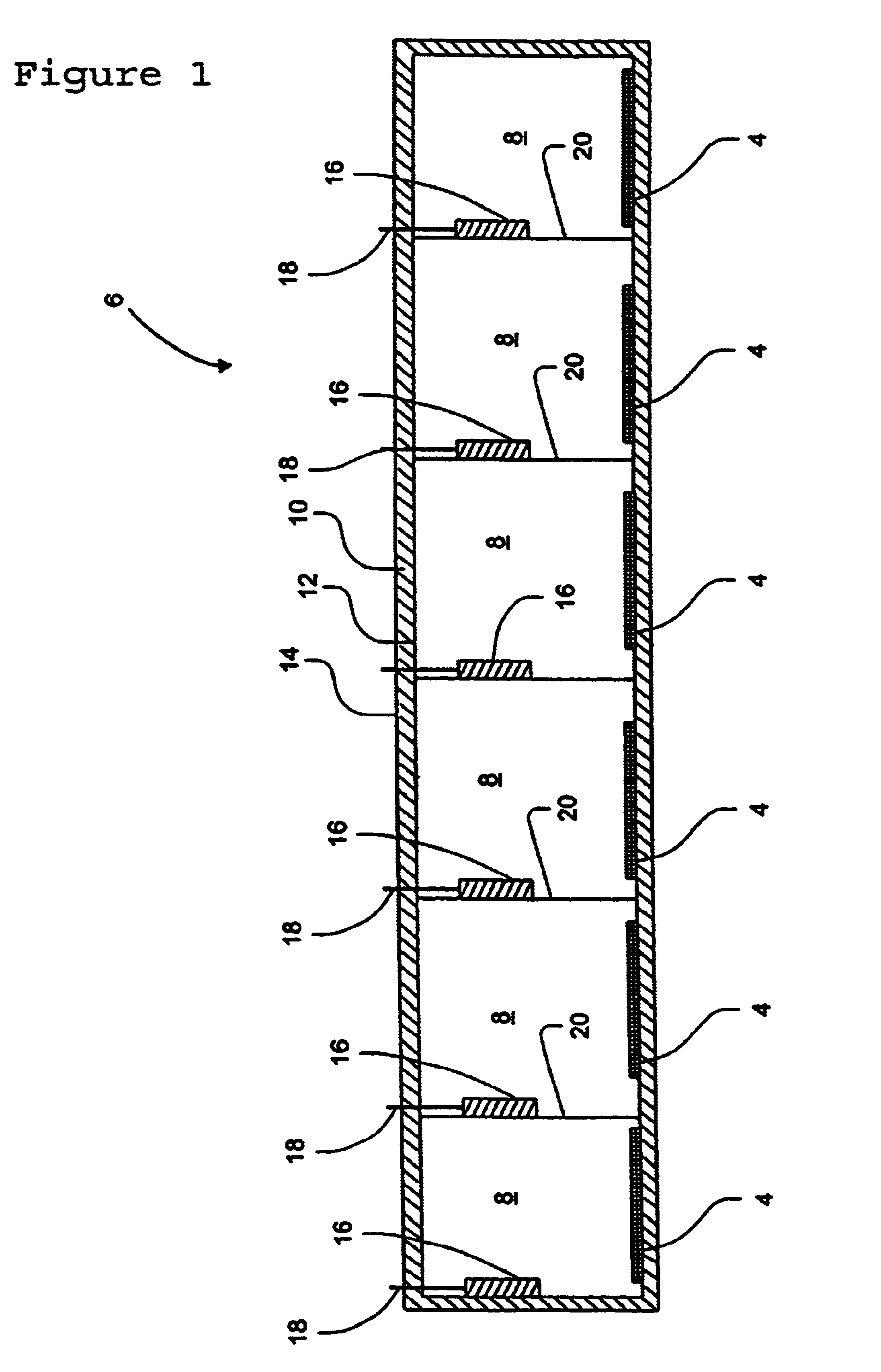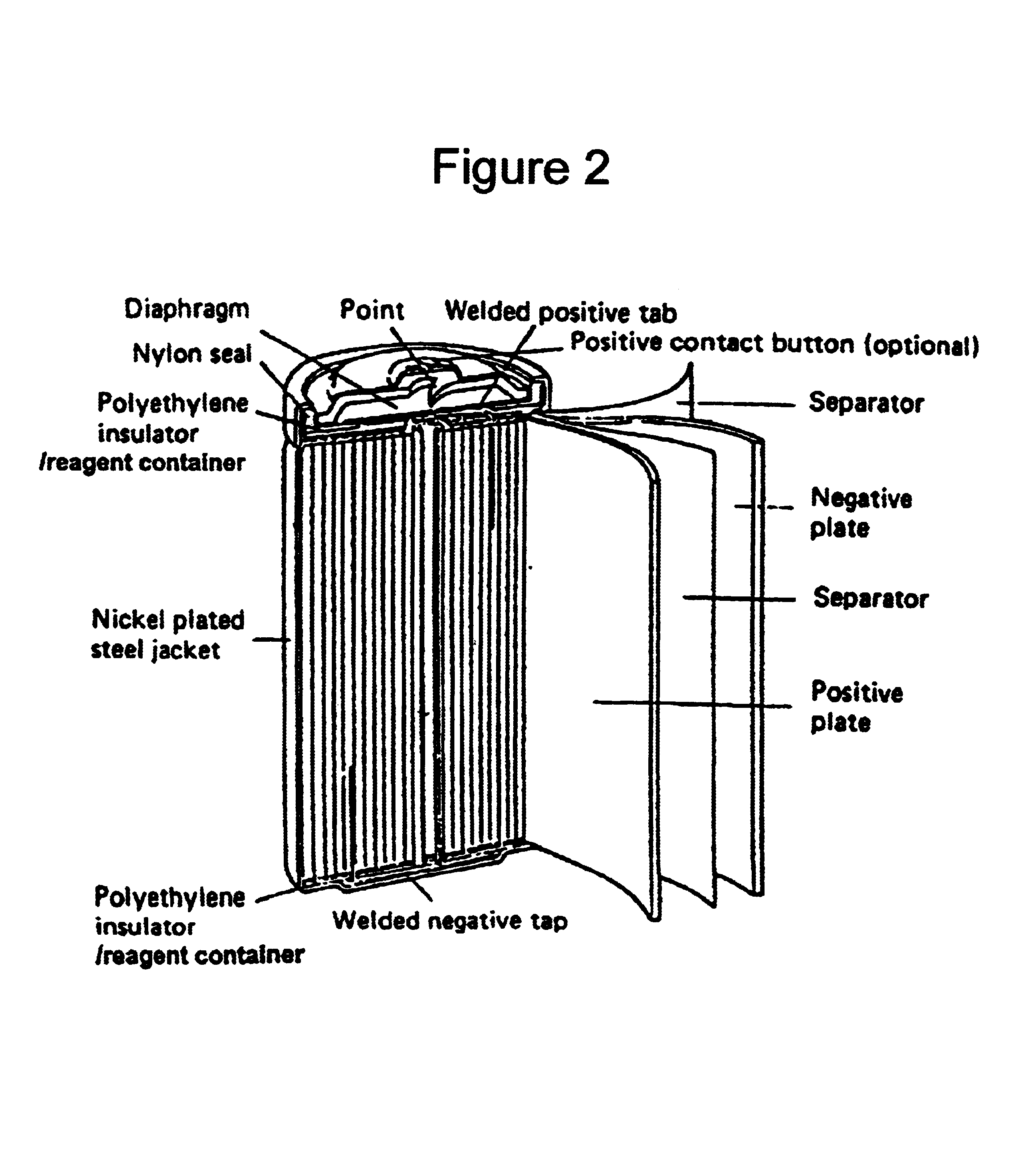Integrated fixation systems
- Summary
- Abstract
- Description
- Claims
- Application Information
AI Technical Summary
Benefits of technology
Problems solved by technology
Method used
Image
Examples
example 1
Lead-Acid Batteries
The term lead-acid battery generally refers to a secondary storage battery in which the electrodes comprise lead, and the electrolyte comprises diluted sulfuric acid. A major use of lead-acid batteries is in vehicle starting applications. Most vehicles use a 12-volt battery with a capacity in the range of 40-60 Ah. A typical battery weighs about 14.5 Kg or 32 lb, and has a sufficient high-rate capacity to deliver the 450-650 A necessary to start an automobile engine. Approximately 60% of the battery's weight is lead or lead components. A lead-acid battery is typically comprised of multiple cells, typically six cells in an automotive battery, with each individual cell containing lead plates and sulfuric acid.
Soluble lead waste may be released from a lead-acid battery as a result of breakage, spillage or leakage from the battery. Such lead waste may be produced within the battery via a sulfation process in which lead sulfate is produced on the positive and / or negati...
example 2
Hi—Cd Batteries
As used herein, the term Ni—Cd rechargeable battery generally refers to a secondary storage battery in which the positive electrode comprises primarily nickel hydroxide, in some embodiments as a coating over a sintered nickel substrate, and the negative electrode comprises cadmium, also over a sintered nickel substrate in some embodiments. The electrolyte, in a typical embodiment, is an alkaline compound such as potassium hydroxide or other hydroxide. The electrolyte may be absorbed within a non-woven nylon or polypropylene fabric which serves as a separator between the electrodes. In a typical embodiment, no free electrolyte is present in the dry cell configuration. A “jelly-roll” construction is typical in cylindrical cell embodiments, in which the positive electrode, separator and negative electrode are rolled up together and placed in a nickel-plated cylinder. The cover which acts as the positive terminal, is typically connected to the nickel-plated case, which ac...
example 3
MBS Reagents
In one aspect, the fixation reagents of the present invention may be a combination of a sulfide and phosphate, and optionally a base (sometimes referred to herein as the “MBS™” reagents). In accordance with this aspect of the invention, once the container retaining the fixation reagents is ruptured, the present invention provides a process for treating soluble metals comprising:(a) contacting the soluble metal with a mixture of one or more of the following components, preferably in combination:(i) a sulfide selected from the group consisting of calcium sulfide, calcium polysulfide, sodium sulfide, sodium hydrosulfide and iron sulfide,(ii) an inorganic phosphate and (iii) a base, preferably including calcium hydroxide. In one embodiment, calcium sulfide is a preferred component of the fixation reagents.
In some embodiments, although it is to be avoided in other embodiments, water may be provided in the apparatus, for example in the composition in the capsule. The amount of...
PUM
| Property | Measurement | Unit |
|---|---|---|
| Temperature | aaaaa | aaaaa |
| Solubility (mass) | aaaaa | aaaaa |
| Polymeric | aaaaa | aaaaa |
Abstract
Description
Claims
Application Information
 Login to View More
Login to View More - R&D
- Intellectual Property
- Life Sciences
- Materials
- Tech Scout
- Unparalleled Data Quality
- Higher Quality Content
- 60% Fewer Hallucinations
Browse by: Latest US Patents, China's latest patents, Technical Efficacy Thesaurus, Application Domain, Technology Topic, Popular Technical Reports.
© 2025 PatSnap. All rights reserved.Legal|Privacy policy|Modern Slavery Act Transparency Statement|Sitemap|About US| Contact US: help@patsnap.com


